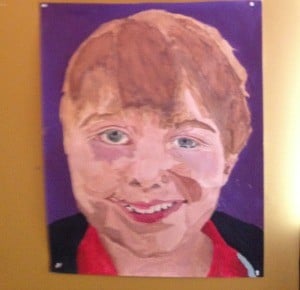Eye for the Art of Living
| June 22, 2012 | “E-V-O-T-Z-2,” said 14-year-old Ryan Longood, reading from an eye chart, during a post-operation check-up with John David Pemberton, D.O., an assistant professor in the Department of Ophthalmology at the University of Arkansas for Medical Sciences (UAMS). “Good, very good,” said Pemberton, who is certified by the American Board of Ophthalmology, specializing in plastic surgery of the eyelids, orbital reconstruction and other surgeries of the structures surrounding the eye. Pemberton, days earlier, had shaved off bone growth that was pushing the teenager’s right eye up and out of its orbit. “That’s like a garage for my eyeball,” Longood explained. “I’ve got some residual swelling but that will go down in time.” Longood, who won the St. Christopher’s School top award for Latin and says he “loves learning,” has spent his entire young life quietly educating his friends and people he meets about one of the rarest vascular lesions in the world: arteriovenous malformation, or AVM. He’s had 40 surgeries since he was 2 years old, most of them with James Y. Suen, M.D., professor and chairman of the Department of Otolaryngology – Head and Neck Surgery in the UAMS College of Medicine. AVM patients from around the world come to UAMS to see Suen because he is one of few doctors who operate on these complex conditions. Suen says AVMs most commonly manifest themselves very early in life or during puberty. They occur when arteries connect to veins and bypass capillaries. Tangles of veins then expand, invade tissues or organs and start coming to the surface of the skin. AVMs can cause a range of health problems including facial disfigurement and paralysis, external and internal bleeding, blood clots and, in the most severe cases, death. For Longood, appreciating life is not an empty sentiment found in a hospital gift shop greeting card. AVMs “can turn your life upside down at any time period,” he said, “so you have to be thankful. They affect you deeply and they can really change who you are.” Longood is a budding artist who turns to paints and paper to express who he is becoming. Already, he’s got a supportive fan at UAMS. “That’s pretty good; you’re getting better,” said Pemberton, the eye surgeon, as he evaluated images of Longood’s seventh-grade “Self Portrait,” featuring a full-color Longood with smiling red lips, and an eighth-grade monochromatic “Self Portrait” with its shadowed, open-mouthed expression akin to Munch’s iconic work. “You got to keep it up because I buy a lot of art,” Pemberton said. |


